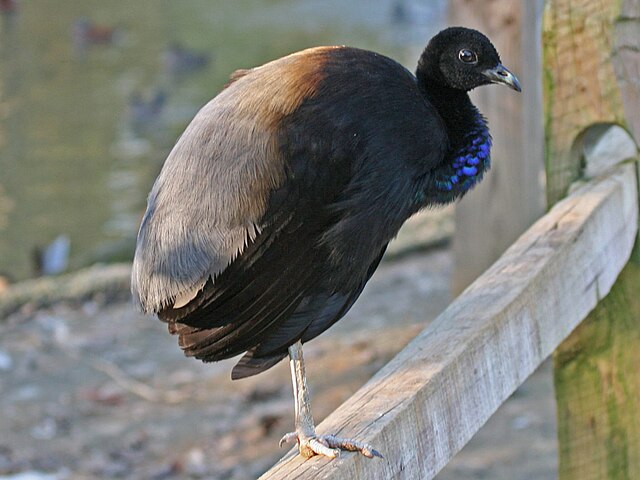Psophia is a genus of birds restricted to the humid forests of the Amazon and Guiana Shield in South America. It is the only genus in the family Psophiidae. Birds in the genus are commonly known as trumpeters, due to the trumpeting or cackling threat call of the males. The three species resemble slightly taller, longer-legged chickens in size and appearance; they measure 45 to 52 centimetres long and weigh 1 to 1.5 kg. They are rotund birds with long, flexible necks and legs, downward-curving bills and a “hunched” appearance. Their heads are small, but their eyes are relatively large, making them look inquisitive and "good-natured". The plumage is soft, resembling fur or velvet on the head and neck. It is mostly black, with purple, green, or bronze iridescence, particularly on the wing coverts and the lower neck. In the best-known taxa, the secondary and tertial flight feathers are white, grey, or greenish-black and hairlike, falling over the lower back, which is the same colour. These colours give the three generally accepted species their names.

Image: Grey winged Trumpeter (Psophia crepitans) RWD
Image: Trumpeters
10th edition of Systema Naturae
The 10th edition of Systema Naturae is a book written by Swedish naturalist Carl Linnaeus and published in two volumes in 1758 and 1759, which marks the starting point of zoological nomenclature. In it, Linnaeus introduced binomial nomenclature for animals, something he had already done for plants in his 1753 publication of Species Plantarum.
Title page of the 10th edition of Systema Naturae
Carl Linnaeus, oil painting by Alexander Roslin in 1775.
The Barbary macaque was included in the 10th edition as Simia sylvanus.
The snowy owl was included in the 10th edition as Strix scandiaca.






